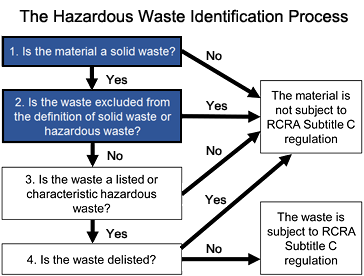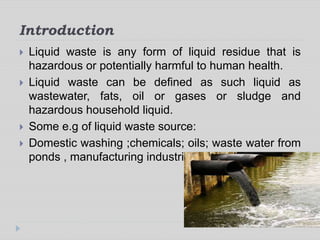Reclaim Waste for Dummies
The Facts About Reclaim Waste Uncovered
Table of ContentsReclaim Waste Things To Know Before You Get ThisThe 7-Minute Rule for Reclaim WasteWhat Does Reclaim Waste Do?The smart Trick of Reclaim Waste That Nobody is Talking About6 Easy Facts About Reclaim Waste Described
Residential sewage waste refers to the waste and products from a household septic storage tank. The correct management and disposal of residential sewer waste require liquid waste to be moved to a sewer treatment plant where the appropriate approaches and equipment are used to detoxify and dispose of waste.
Commercial waste commonly consists of potential dangers, such as combustible products or a mixture of fluid and strong waste items, and requires an extra advanced and comprehensive disposal procedure. The disposal of commercial waste usually entails the filtration of waste before transportation to make sure secure and proper disposal. Industrial waste is produced from by-products and overflow of commercial procedures and manufacturing.
This sort of waste can not use the same sewage administration transport or procedures as septic or industrial liquids. The hazardous waste monitoring procedure requires the evaluation and testing of fluid waste before it undergoes the disposal process (liquid waste removal). Drainage waste is the liquid waste that originates from runoff and excess stormwater in highly inhabited locations or cities
Overflow waste can cause contamination and flooding if not dealt with correctly. Ensuring correct waste monitoring can protect against catastrophes and decrease environmental harm.
Reclaim Waste Can Be Fun For Anyone
Get in touch with PROS Services today to learn more about our waste management and disposal solutions and the proper methods to look after the fluid waste you generate.
(https://reclaim-waste.jimdosite.com/)Do you understand what happens to your water when you end, purge the toilet or drain pipes the cleaning equipment? No? Well, it's worth recognizing. This supposed 'wastewater' is not just an important resource yet, after therapy, will be launched to our land, waterways or the ocean. Utilized water from commodes, showers, baths, kitchen sinks, washings and industrial procedures is called wastewater.

water utilized to cool equipment or clean plant and tools). Stormwater, a type of wastewater, is drainage check these guys out that moves from farming and metropolitan areas such as roofings, parks, gardens, roadways, courses and gutters right into stormwater drains, after rainfall. Stormwater flows without treatment directly to local creeks or rivers, eventually getting to the sea.
How Reclaim Waste can Save You Time, Stress, and Money.
In Queensland, a lot of wastewater is dealt with at sewer therapy plants. Wastewater is transferred from domestic or industrial sites via a system of sewers and pump terminals, called sewage reticulation, to a sewer therapy plant. Neighborhood governments build, maintain and operate most sewage treatment plants. Operators are licensed under the Environmental Management Act 1994 to discharge treated wastewater at an acceptable environmental requirement into waterways.
The Department of Natural Resources suggests neighborhood governments concerning handling, operating and preserving sewerage systems and treatment plants. In unsewered locations, city governments may require owners to set up individual or household sewer treatment systems to deal with residential wastewater from toilets, cooking areas, washrooms and washings. The Department of Natural Resources authorises the use of household systems when they are confirmed to be effective.
In some new class, treatment of some stormwater to get rid of litter, sand and crushed rock has begun making use of gross pollutant catches. Wastewater treatment happens in 4 stages: Gets rid of solid matter.
Wastewater after that flows right into huge storage tanks where solids resolve and are removed as sludge. Oil and residue are skimmed from the surface area. Makes use of tiny living microorganisms called micro-organisms to break down and get rid of remaining dissolved wastes and great fragments. Micro-organisms and wastes are incorporated in the sludge. Eliminates nitrogen and phosphorus nutrients that can create algal blooms in our rivers and intimidate aquatic life.
Some Known Incorrect Statements About Reclaim Waste
Nutrient removal is not readily available at all sewer therapy plants since it requires expensive specialized tools. Clear liquid effluent produced after therapy might still consist of disease-causing micro-organisms - liquid waste disposal.

The majority of wastewater streams into the sewage system. Under the Act, regional governments administer approvals and permits for environmentally pertinent activities (Periods) involving wastewater releases that could have a regional influence.
6 Easy Facts About Reclaim Waste Explained
Otherwise, samples are considered lab evaluation. Typically numerous examinations are required to develop the degrees of each of the various pollutants such as oils, hefty metals and pesticides in water. Surveillance gives factual information regarding water high quality and can validate that permit problems are being fulfilled. The details obtained via surveillance gives the basis for making water top quality choices.